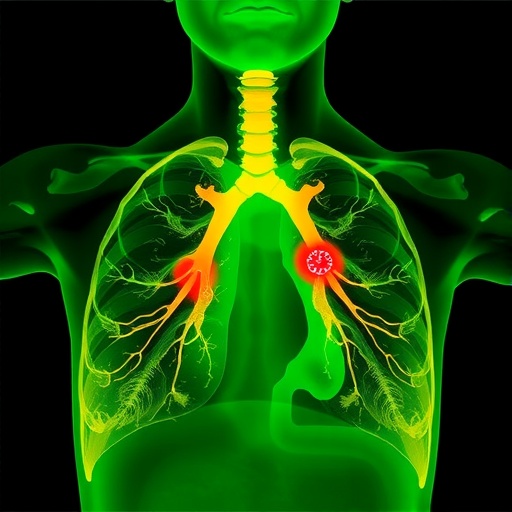Researchers at the Case Comprehensive Cancer Center at Case Western Reserve University School of Medicine have developed a computer program to find new indications for old drugs. The computer program, called DrugPredict, matches existing data about FDA-approved drugs to diseases, and predicts potential drug efficacy. In a recent study published in Oncogene, the researchers successfully translated DrugPredict results into the laboratory, and showed common pain medications–like aspirin–can kill patient-derived epithelial ovarian cancer cells.
In the new study, DrugPredict suggested non-steroidal anti-inflammatory drugs, also known as NSAIDs, could have applications for epithelial ovarian cancer. The researchers exposed patient-derived epithelial ovarian cancer cells growing in their laboratory to a specific NSAID, indomethacin, and confirmed the DrugPredict finding. Indomethacin killed both drug-resistant and drug-sensitive epithelial ovarian cancer cells. Interestingly, cisplatin-resistant epithelial ovarian cancer cells were most sensitive to indomethacin. When the researchers added chemotherapy drugs to the experiments, the cancer cells died even faster. The findings could represent the first step toward a new therapy regimen for epithelial ovarian cancer.
Epithelial ovarian cancer is the fifth leading cause of cancer deaths in women, killing approximately 14,000 women annually in the United States. Available therapies are only moderately successful, with more than 70 percent of women dying within five years of diagnosis. According to the authors, part of the challenge in developing new ovarian cancer drugs lies in escalating clinical trial costs and lengthy drug development timelines. Programs like DrugPredict could "reposition" FDA-approved medications for new indications–a more efficient strategy.
"Traditional drug discovery process takes an average of 14 years and billions of dollars of investment for a lead anti-cancer drug to make the transition from lab to clinic," said study first author Anil Belur Nagaraj, PhD, research associate at Case Western Reserve University School of Medicine. "Drug re-positioning significantly shortens the long lag-phase in drug discovery and also reduces the associated cost."
DrugPredict was developed by co-first author QuanQiu Wang of ThinTek, LLC, and co-senior author Rong Xu, PhD, associate professor of biomedical informatics in the department of population and quantitative health sciences at Case Western Reserve University School of Medicine. The program works by connecting computer-generated drug profiles–including mechanisms of action, clinical efficacy, and side effects– with information about how a molecule may interact with human proteins in specific diseases, such as ovarian cancer.
DrugPredict searches databases of FDA-approved drugs, chemicals, and other naturally occurring compounds. It finds compounds with characteristics related to a disease-fighting mechanism. These include observable characteristics–phenotypes–and genetic factors that may influence drug efficacy. Researchers can collaborate with Xu to input a disease into DrugPredict and receive an output list of drugs–or potential drugs–with molecular features that correlate with strategies to fight the disease.
"For any given disease, DrugPredict simultaneously performs both a target-based, and phenotypic screening of over half a million chemicals, all in just a few minutes," Xu said.
In the Oncogene study, DrugPredict produced a prioritized list of 6,996 chemicals with potential to treat epithelial ovarian cancer. At the top of the list were 15 drugs already FDA-approved to treat the cancer, helping to validate the DrugPredict approach. Of other FDA-approved medications on the list, NSAIDs ranked significantly higher than other drug classes. The researchers combined the DrugPredict results with anecdotal evidence about NSAIDs and cancer before confirming DrugPredict results in their laboratory experiments.
The program could help identify safe alternatives for diseases–like epithelial ovarian cancer–that desperately require new treatment options. "The primary advantage of drug re-positioning over traditional drug development is that it starts from compounds with well-characterized pharmacology and safety profiles. This significantly reduces the risk of adverse effects and attrition in clinical trials," Xu said.
"By combining my laboratory's expertise in ovarian cancer biology and Dr. Xu's expertise in bioinformatics, we were able to uncover a potentially novel drug approach to treat ovarian cancer," said co-senior author Analisa DiFeo, PhD, the Norma C. and Albert I. Geller Designated Professor of Ovarian Cancer Research and assistant professor in the Case Comprehensive Cancer Center at Case Western Reserve University School of Medicine. Said Nagaraj, "Currently there are no drugs targeting cancer stem cells being evaluated in ovarian cancer clinical trials. Our results provide a rationale to test NSAIDs like Indomethacin as a novel drug in ovarian cancer clinical trials."
DiFeo is planning to test indomethacin's ability to specifically target ovarian cancer stem cells in patient tumors in a phase 1 clinical trial. She will conduct the trial in collaboration with Steven Waggoner, MD, division chief of gynecologic oncology at University Hospitals Seidman Cancer Center and professor of obstetrics and gynecology at Case Western Reserve University School of Medicine.
###
This study was supported by Norma C. and Albert I. Geller via the Gynecological Cancer Translation Research Program at the Case Comprehensive Cancer Center, and grants from The Mary Kay Foundation (to A.D. and R.X.), the Eunice Kennedy Shriver National Institute Of Child Health & Human Development of the National Institutes of Health under the NIH Director's New Innovator award number DP2HD084068 (to R.X.), The National Cancer Institute award number R011CA197780-01A1 (to A.D.), and The Young Scientist Foundation (A.D.). This research was also supported by the Athymic Animal and Xenograft Core Facility and the Cytometry & Imaging Microscopy Core Facility of the Case Comprehensive Cancer Center (P30CA043703).
Nagaraj AB, et al. Using a novel computational drug-repositioning approach (DrugPredict) to rapidly identify potent drug candidates for cancer treatment. Oncogene. 2017 Oct 2. doi: 10.1038/onc.2017.328.
For more information about Case Western Reserve University School of Medicine, please visit: http://case.edu/medicine.
Media Contact
Ansley Gogol
[email protected]
216-368-4452
@cwru
http://www.case.edu
http://casemed.case.edu/cwrumed360/news-releases/release.cfm?news_id=860
Related Journal Article
http://dx.doi.org/10.1038/onc.2017.328




